North to Alaska (1960)
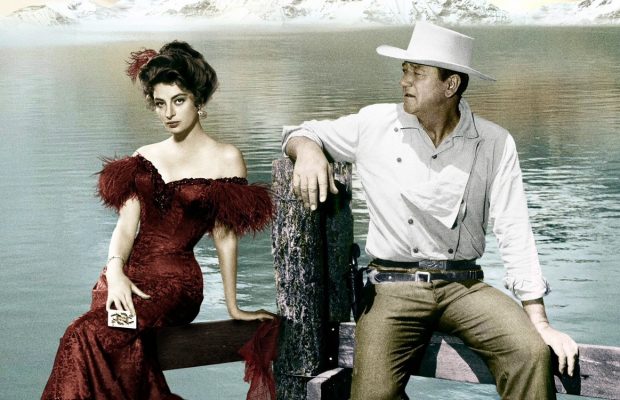
Toronto Film Society presented North to Alaska (1960) on Sunday, October 28, 1984 in a double bill with Tarzan Escapes as part of the Season 37 Sunday Afternoon Film Buffs Series “A”, Programme 3.
Production Company: 20th Century-Fox. Produced and Directed: Henry Hathaway. Screenplay: John Lee Mahin, Martin Rackin and Claude Binyon, based on the play Birthday Gift, by Laszlo Fodor, from an idea by John Kafka. Assistant Director: Stanley Hough. Art Directors: Duncan Kramer and Jack Martin Smith. Cinematography: Leon Shamroy. Special Effects: L.B. Abbott and Emil Kosa. Cinemascope and De Luxe Color. Editor: Dorothy Spencer. Costumes: Bill Thomas. Choreography: Josephine Earl. Music: Lionel Newman. Orchestration: Urban Thielmann and Bernard Mayers. Songs: “If You Knew” by Russel Faith, Robert P. Marcucci and Peter De Angelis, sung by Fabian and title song sung by Johnny Horton.
Cast: John Wayne (Sam McMord), Stewart Granger (Geroge Pratt), Ernie Kovacs (Frankie Canon), Fabian (Billy Pratt), Capucino (Michelle), Mickey Shaughnessy (Boggs), Karl Swenson (Lars), Joe Sawyer (Commissioner), Kathleen Freeman (Lena), John Qualen (Lumberjack), Stanley Adams (Breezy), Stephen Courtleigh (Duggan), Douglas Dick (Lieutenant), Jerry O’Sullivan (Sargeant), Ollie O’Toole (Mack), Frank Faylen (Arnie), Fred Graham (Ole), Alan Carney (Bartender), Peter Bourne (Olaf), Charles Seel and Rayford Barnes (Gold Buyers), Fortune Gordien and Roy Jenson (Lumberjacks), Joey Faye (Sourdough), Esther Dale (Woman at Picnic).
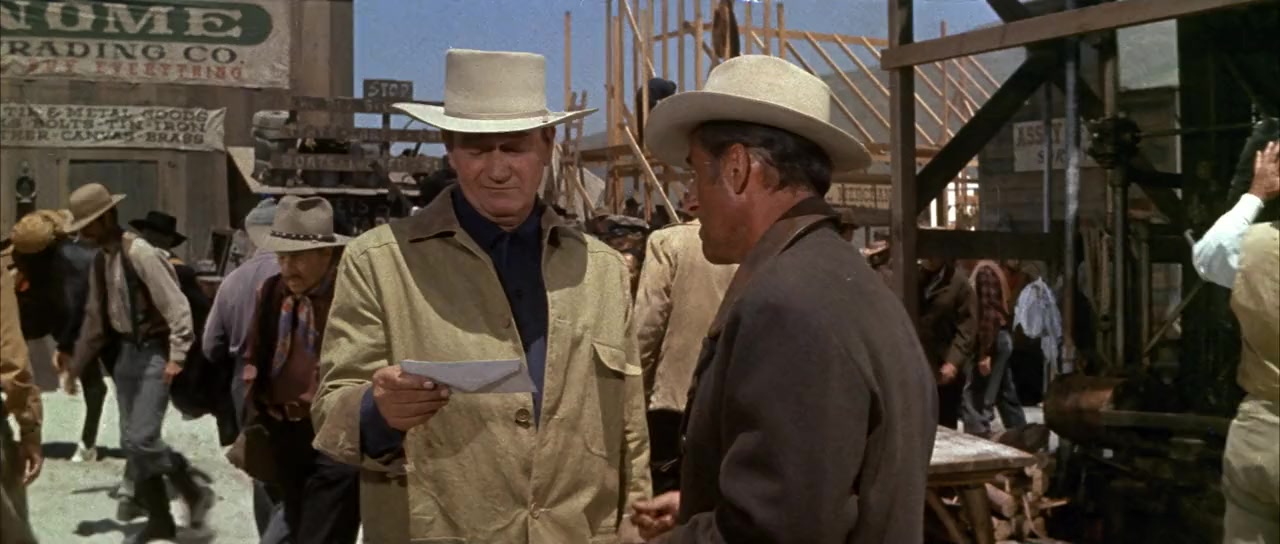
The second half of today’s double bill is a typical John Wayne “actioner”, sort of a northern Western, set in Alaska in 1900. Art and set decorators have done an excellent job in reconstructing the period, a fact that Films & Filming commented on in their review of January 1961: “In fact, if you look at the film primarily as a study in period decor and accessories, linked by a tentative, cheery and sometimes very amusing story, you will probably get the most from it that it has to offer.” Definitely not a John Wayne fan! The reviewer did say, however, that “The bar-room fights–traditionally supplying the comic relief even in a serious Western–are here pushed over the brink into pure (and excellent) slapstick.” The film quite definitely lives not in the real world but in the world of screen conventions–such as a sock in the jaw as an expression of brotherly love!
North to Alaska burlesques both in the gold-rush epic and the Tristan and Isolde legend and does it in a cheery, amusing and often riotous fashion. Naturally Wayne, Granger and Kovacs ham up their parts to perfection. The elegant Capucine is charming and teen idol Fabian is properly smitten. Our heroes quickly mop up the muddy streets with Mickey Shaughnessy and his bunch of crooks who try to steal their claim, and interwoven in the plot are humorous con jobs performed by the talented Ernie Kovacs, making one of his few film appearances before his untimely death. Played for fun, the film is a big, brawling, lusty adventure story with lots of rugged action and slapstick laughs. Sit back and enjoy.
Director Henry Hathaway was a former child actor and as an Assistant Director between 1913-33 worked with men such as Paul Bern, Frank Lloyd, Josef Von Sternberg and Victor Fleming. Although his first film was an unforgettable Zane Grey Western called Heritage of the Desert (1932), his first popular success was Lives of a Bengal Lancer (1935). A generally reliable director of action films, it has been remarked that inside Hathaway there often seems to be a John Ford or Howard Hawks struggling to get out. Among his best films are the uncharacteristic Peter Ibbetson (1935) retaining some of the quality of the Du Maurier novel; two neat thrillers, The Dark Corner (1946) with Lucille Ball, and Kiss of Death (1947) which introduced Richard Widmark as a giggling psychopath killer; and Niagra (1950), a splashy melodrama (no pun intended) that made Marilyn Monroe into a sex goddess. (In 1936 he’d also directed another blonde sex goddess, Mae West, in Go West, Young Man–presumably, pun intended!) In the ’40’s he introduced the semi-documentary thriller, The House on 92nd Street (1945), 13 Rue Madeleine (1947), and Call Northside 777 (1948) which treated subjects (now outdated) as if they were newsreel reports by the F.B.I. He directed the first three-strip Technicolor “outdoors” picture, The Trail of the Lonesome Pine (1936). His association with John Wayne goes back a long way, to The Shepherd of the Hills (1941), reported to be the best of the “mountain feud” films, and in 1969 he helped Wayne win his first Academy Award for True Grit. One gathers that Hathaway was a pretty hard-nosed director, probably patterning himself after Victor Fleming with whom he had worked early in his career (Mantrap 1926, Hula 1927, The Virginian 1929, and others). John Wayne, doubtless got along with this kind of man but his co-star in today’s picture did not. According to Granger’s autobiography, Sparks Fly Upwards, in his first film with John Wayne (“I always thought I was big until I met John Wayne.”), Granger found the director to be a cigar-chewing bully who, although charming in his own home, became a monster directly he walked on to the set.
From a bit part in The Drop Kick (1927) to the lead in The Shootist (1976), John Wayne made 153 films in a career lasting 49 years. He would probably still be going if cancer had not claimed his life in 1979. The film critics did not like John Wayne–they disliked his films, his acting, his politics, everything about him. Fortunately, film critics didn’t matter to Wayne or his public and they made the tough, genial actor into one of the most popular stars the movie world ever had.
The ’40’s saw some of his finest work: Tall in the Saddle (1944), Red River, Fort Apache, and 3 Godfathers (1948), She Wore a Yellow Ribbon and Sands of Iwo Jima (1949) to name just a few. And the wild donnybrooks, so much a part of his films, certainly got their start in Seven Sinners (1940) directed by Tay Garnett.
The absolute “stinkers” of the ’50’s such as The Conqueror (1956), The Barbarian and the Geisha (1958) and Jet Pilot (1950, released in 1957) were more than offset by The Quiet Man (1952), Hondo (1953), The High and the Mighty (1954), The Searchers (1956) and Rio Bravo (1959) to name just some of the best. The ’60’s began with Who Shot Liberty Valance (1962), McLintock (1963)–with the biggest mud fight ever put on film, Donovan’s Reef (1963), The Sons of Katie Elder (1965), El Dorado (1967) and his Oscar winning performance in True Grit (1969) to name some.
On screen for nearly fifty years, John Wayne was, for many filmgoers, the rugged embodiment of the American idea of integrity, courage and “true grit”.
Notes by Barry Chapman

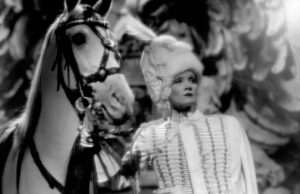
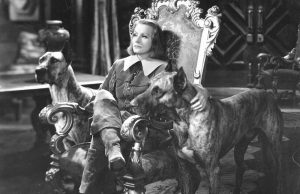
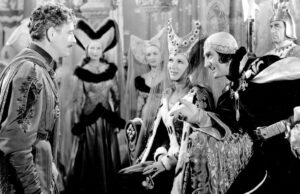






Leave a Reply